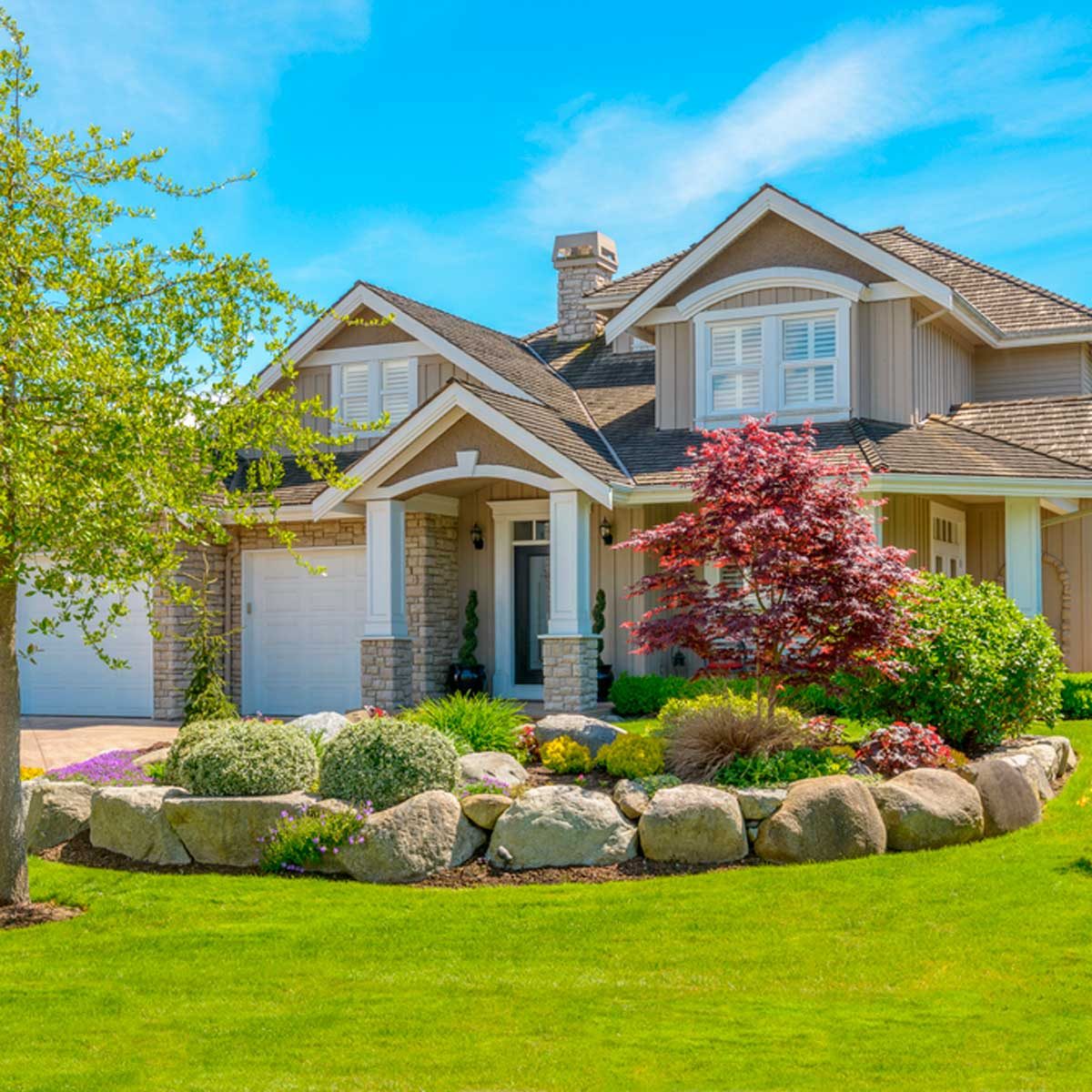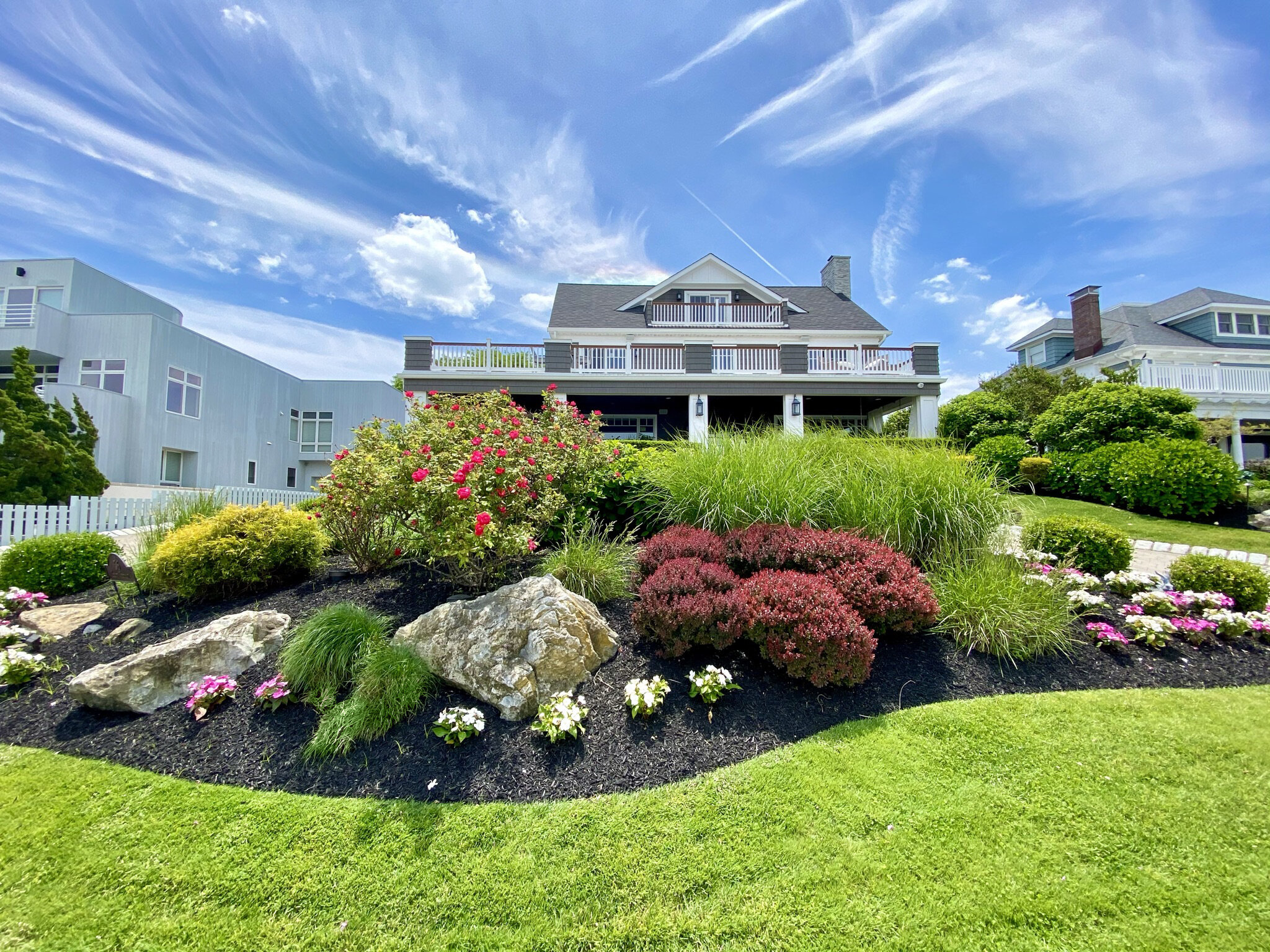Professional Bush Removal Jacksonville: Safe and Efficient Bush Removal Solutions
Professional Bush Removal Jacksonville: Safe and Efficient Bush Removal Solutions
Blog Article
Elevate Your Residential property's Visual With Sustainable Landscape Design Layouts and Eco-Friendly Practices

Benefits of Sustainable Landscaping
Implementing sustainable landscape design techniques not just preserves all-natural sources however likewise advertises biodiversity and enhances overall environmental health and wellness. By choosing environment-friendly landscape design methods, residential or commercial property owners can enjoy a wide range of benefits that prolong beyond simply visual allure. One significant benefit is the decrease of water usage with using drought-resistant plants, rainfall yards, and effective irrigation systems. This not just reduces energy expenses however also contributes to water preservation efforts in the neighborhood.
Furthermore, sustainable landscaping can improve soil wellness by decreasing making use of chemical plant foods and pesticides, thereby producing a healthier environment for plant growth and helpful dirt organisms. This, subsequently, boosts the general resilience of the landscape to stand up to ecological stress factors and environment modification impacts - landscaping company Jacksonville. Furthermore, sustainable landscaping practices can bring in diverse wildlife, consisting of pollinators like bees and butterflies, cultivating a much more lively and balanced community within the residential or commercial property
Incorporating Indigenous Plants
To build on the benefits of sustainable landscape design, a strategic concentrate on including native plants can further enhance eco-friendly durability and advertise biodiversity within the landscape. Indigenous plants are varieties that normally happen in a particular area and have actually progressed to flourish in the neighborhood climate, soil problems, and community. By including indigenous plants in landscaping layouts, homeowner can reduce water use, minimize the requirement for chemical pesticides and plant foods, and support the local wildlife populace.
Integrating indigenous plants also helps in maintaining the special personality and identification of an area's plants. These plants frequently need less upkeep when developed, making them a economical and sustainable landscaping option over time. Furthermore, indigenous plants can attract indigenous pollinators like butterflies and bees, adding to the total health of the ecosystem.
When choosing native plants for landscape design jobs, it is necessary to select types that are well-suited to the details ecological problems of the site. Consulting with neighborhood nurseries or arboretums can supply valuable support on selecting the right indigenous plants for a certain area. By integrating indigenous plants right into landscape design styles, residential or commercial property owners can develop attractive, sustainable exterior areas that profit both the atmosphere and the neighborhood.

Water Preservation Strategies
Effective irrigation approaches play a vital role in lasting landscaping techniques, making sure optimal water conservation efforts in exterior rooms. Implementing strategies such as drip watering, rainwater harvesting, and wise watering systems can significantly decrease water wastage while keeping a healthy landscape. Leak watering provides water directly to the origins of plants, decreasing dissipation and drainage. Rain harvesting includes collecting rainwater from roofs and saving it for later use in watering, reducing the dependence on municipal water sources. Smart irrigation systems utilize climate information and dirt dampness degrees to change sprinkling routines, stopping overwatering and advertising water performance.
Along with sophisticated irrigation methods, xeriscaping is an additional water-saving landscaping strategy that concentrates on utilizing drought-resistant plants, compost, and reliable watering to develop a low-water landscape style - landscaping company Jacksonville. By picking native plants that are well-suited to the local climate and soil conditions, homeowner can decrease the requirement for too much watering, inevitably saving water and promoting a lasting outdoor atmosphere
Eco-Friendly Hardscaping Ideas
Enhancing exterior spaces with environmentally friendly hardscaping features can contribute substantially to sustainable landscape design practices. When thinking directory about hardscaping elements, choose products like redeemed wood, recycled concrete, or all-natural stone to reduce environmental effect. These products not only include a distinct visual attract your outdoor area but also minimize the demand for brand-new resources removal.
Implementing permeable paving choices such as crushed rock or absorptive concrete can aid minimize water runoff and promote groundwater recharge. These options allow rainwater to leak right into the ground, protecting against erosion and lessening the problem on stormwater systems.
Integrating indigenous plants right into hardscaping designs can additionally enhance eco-friendliness by supporting regional wildlife and lowering the requirement for too much watering or chemical therapies. By including eco-friendly walls or upright gardens, you content can present extra plant life right into urban setups, boosting air quality and biodiversity.
Including energy-efficient lighting, such as solar-powered LEDs, into hardscaping designs can lower power intake and reduced your building's carbon impact. Prioritizing environmentally friendly hardscaping concepts not only enhances the elegance of your outdoor area yet additionally demonstrates a dedication to ecological stewardship.
Upkeep Tips for Sustainable Landscapes

On a regular basis prune plants to advertise healthy growth and protect against overgrowth that can lead to pest problems or illness. Usage natural plant foods to nurture the soil and plants without unsafe chemicals that can leach right into the setting.
Conclusion
In final thought, lasting landscaping practices provide various advantages for home proprietors, from improving the aesthetic charm of the surroundings to promoting environmental conservation. By including indigenous plants, implementing water preservation strategies, and making use of green hardscaping ideas, residential or commercial property proprietors can develop gorgeous landscapes that are also eco responsible. With correct upkeep, sustainable landscapes can add and flourish to a much healthier ecosystem for both humans and wildlife.
Furthermore, lasting landscape design can improve soil health and wellness by lessening the usage of chemical plant foods and chemicals, thus creating a healthier environment for plant growth and useful soil microorganisms.To develop upon the advantages of lasting landscaping, a calculated emphasis on you can check here incorporating native plants can even more enhance eco-friendly strength and advertise biodiversity within the landscape. By including native plants in landscaping styles, residential property proprietors can lower water usage, decrease the need for chemical pesticides and fertilizers, and sustain the neighborhood wild animals populace.
These plants often require much less maintenance once developed, making them a lasting and affordable landscaping remedy in the long run. By incorporating indigenous plants into landscaping styles, residential or commercial property owners can develop stunning, lasting exterior areas that profit both the community and the environment.
Report this page